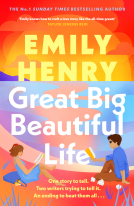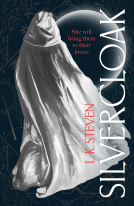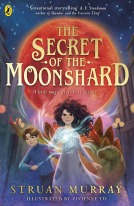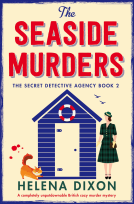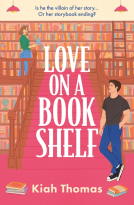
The Art of Noticing
Rediscover What Really Matters to You
by Rob Walker
This title was previously available on NetGalley and is now archived.
Send NetGalley books directly to your Kindle or Kindle app
1
To read on a Kindle or Kindle app, please add kindle@netgalley.com as an approved email address to receive files in your Amazon account. Click here for step-by-step instructions.
2
Also find your Kindle email address within your Amazon account, and enter it here.
Pub Date 9 May 2019 | Archive Date 31 Jul 2019
Penguin Random House UK, Ebury Publishing | Ebury Press
Talking about this book? Use #TheArtOfNoticing #NetGalley. More hashtag tips!
Description
DISTRACTED?
WELCOME TO THE ERA OF WHITE NOISE.
We all yearn to find true meaning and calm in the chaos but how? In The Art of Noticing by Rob Walker you will discover playful exercises designed to help you get beyond daily distractions and make small yet impactful changes.
Imagine devoting just one moment a week to consciously directing your attention. How would that affect the way you see, perceive and think? How would it shift the way you engage with the world? How much might that not only change, but improve your work and life? How fun would that be?
Accessible, inspiring, informed and useful, this book features 131 surprising and innovative exercises,
Find a more joyful approach to life.
Notice More.
Available Editions
| EDITION | Other Format |
| ISBN | 9781529104431 |
| PRICE | £12.99 (GBP) |
| PAGES | 256 |
Featured Reviews
In our busy world, this book caught my eye....how much do people notice now? Most of the time people are on their phones, headphones on, looking down. Why do we no longer look around and notice what we have?
This book challenges modern society to put down their phones, stop looking at their feet and look up, look around, notice new things.
I really enjoyed browsing through this book- I admit I didn't read every challenge but I did read the headings and chose ones I thought I could do- the handy difficulty levels at the beginning help to guide you. I figured I would start with one eye challenges and move up through 2 and 3 eye challenges. I could then graduate to the 4 eye challenges.
These are thought provoking challenges asking you to notice things, pay attention or look for new things. It starts simply with a scavenger hunt and progresses to writing letters to strangers and sitting silently on your own.
The layout of the book is easy to use and you can flip between chapters and challenges quite easily.
I will be trying some more throughout the year and will hopefully become better at the art of noticing!
I wouldn't buy this for my library as it is a primary school but I do think I would add it to a gift list for a couple of friends who could really benefit from slowing down and taking time for the world around them.
 Ness C, Reviewer
Ness C, Reviewer
I didn't know I needed this book until I experienced it.
One of the quotes cited at the start of the book from economist Herb Simon warns: "A wealth of information creates a poverty of attention". Given that quote is from 1971, imagine what Herb must be thinking now.
The 130 exercises given in the book (I have so far completed approximately 20 of these and look forward to the remainder) aim to provide "an escape from the cult of productivity and efficiency" by encouraging the reader to be more curious without the need to be so eternally (and often unnecessarily) busy. It makes the point that as individuals we might want to look back on a life of discovery, rather than an existence that requires items to be ticked off a list. The exercises are ranked in terms of difficulty, with one eye representing a fairly straightforward task that anyone can do anytime and at the other end of the spectrum, four eyes indicate an advanced noticing task that might take a bit of planning. The tasks are not given in that order in the book, so you can dip in and out as you please without the need to be too linear about it.
Following discussions in our house about the constant use of technology and the corresponding lack of focus we tend to have in relation to our immediate surroundings (checking the phone while walking, allowing Google to remember things for us, etc) this book allowed me to think about some ways of managing those issues, or at least taking a time-out from them. It was a breath of fresh air.
The book is one I will certainly be purchasing for friends.
Many thanks to NetGalley, Penguin Random House, Ebury Publishing and Rob Walker for a copy of this ARC in exchange for an honest review.
 Chrys A, Bookseller
Chrys A, Bookseller
A really insightful and interesting book, lots of useful exercises on seeing more of the world around us. Great for everyone from artists to architects to designers. Nicely structured and easy to dip in and out of.
 Rosalind B, Reviewer
Rosalind B, Reviewer
So much has been written recently about mindfulness, using techniques such as conscious breathing or doing a body scan with the purpose of bringing yourself back into the present moment. The Art of Noticing takes a different route by suggesting that if we are alert and notice things as we live our lives, then we not only stay in the present but live more fulfilled lives by being constantly surprised and delighted.
The book is divided into five sections each focusing on a different aspect of noticing: looking, sensing, going places, connecting with others and being alone. Each section is full of suggested 'exercises' (there are 131 in total) which are really challenges to yourself to do something different. They are graded from easy, being something you could do right now, to advanced, being something more adventurous.
I read the book from cover to cover, but I suggest it is one to have lying about and dip into each day. The most appropriate thing may be to open it at random and be surprised. I was left slightly reeling from all the suggestions. Some, of course, appealed much more than others but having read the whole book I wonder if the best opportunity to really discover something different would be to try some of the things which don't appeal and so challenge myself to approach things in a different way.
But really the aim is for it to be fun and to love being wherever you are, even if it is stuck in commuter traffic, or in a waiting room, because there are so many things you can do to be active and engaged. And it doesn't necessarily mean detaching from your mobile phone as there are even exercises in which you can use your camera.
I was initially put off by the first section, as it all seemed to be about noticing things in a big city and where I live I would be lucky to spot a single payphone and I am not sure if I have ever seen a standpipe - however I missed the point. The exercises can be adapted to any environment and that is just the point, to use your imagination and come up with your own ways of noticing.
In this book, Rob Walker references so many fascinating people, and draws on ideas from artists, film makers, authors, journalists, his students and so many more. The bibliography is very extensive and in itself is a goldmine of opportunities to discover something new.
Would I recommend this book? Yes. It was overwhelming reading it from cover to cover. But equally I think it would be impossible to read it and not become more aware in some way. Why go around in a daze all day, being bored by routine lives when we could be spotting things which make us smile. As the author says, if we stay eager, we are alive.
My thanks to the author, publisher and to NetGalley for the opportunity to review this book.
A surprisingly interesting book. Based on the idea that there are too many distractions in our lives, we should practise paying attention and being more curious. With over-stimulation, there is a danger we become indifferent to the people and places around us. This book encourages us to "rediscover our sense of creativity and wonder" and to cultivate an original perspective on life.
Following an interesting introduction, there are 131 exercises for the reader to work through. These are split into five themed sections and are rated 1 to 4 depending on how demanding they are.
The exercises are surprisingly varied and certainly thought-provoking. The idea is to dip in and out of the book as and when the fancy takes you. Some of the ideas seem a bit obvious but then others are quite surreal.
It is all about noticing in a joyful manner. A fun book that we should take notice of! It would make an excellent gift.
The Art of Noticing is essentially another mindfulness reference guide but it approaches how we become mindful in relatively innovative new ways and these are compiled in the book as 131 different exercises. Each exercise aims to make the reader more consciously aware and to help them notice more about life that may usually pass them by. They are graded by level of difficulty from easy right through to advanced. Mr Walker emphasises the need to pay attention to the world around us and to firmly plant ourselves in the present. This is an interesting book and you can tell a lot of work and research went into producing it. Recommended to those who are seeking new and diverse ways to achieve mindfulness. Many thanks to Ebury Press for an ARC.
 Sue D, Reviewer
Sue D, Reviewer
The premise of this book is that we are all too distracted by modern life (especially technology - mobile phones, etc) that we become de-sensitised what matters. We are conditioned to plough through meaningless lists of tasks and activities set by others, and not seeing or doing what is important to ourselves. "Do you want to look back on a life of items crossed off lists drawn up in response to the demands of others?" is a sentiment that will hit home for most of us.
The book goes on to describe and suggest 131 activities that will help regain the lost art of noticing. Some are frivolous, some are amusing and a few are a bit daft - for example if I stared at an item in a department store for 5 minutes I think security would be hovering nearby! Others are quite clever and 'do-able': Find the numbers 1-100, in order, when out and about. Deconstruct things, even adverts, and think about how they came into being (both socially and physically). Look upwards - it's often surprising what's above eye-level. Think - how would a child see / describe this? View everyday objects from different angles. Take an unfamiliar route. Stand still and make a list of all the things you hear.
There were many interesting things I learnt about or highlighted - the artist Oakoak for example - I spent ages looking at online pictures of his (often hilarious) street art.
The downside to this book is it's rather American / city based and uses museums as source material for quite a few of the activities, although I suppose any public space would do.
The book was a fun yet thought-provoking read and I will definitely engage in some of the less demanding activities.
 Alan C, Media/Journalist
Alan C, Media/Journalist
Not the type of book which I can see a lot of people reading in one sitting but over time there are some great suggestions included. I have started to notice more things I hadn't spotted before on the daily walk to and from the office. some great ideas for example on what to look at in museums rather than the exhibits or even just in the sky. The ideas are a great way to help you relax and take your mind of those stressful daily issues we all have.
 Heather B, Reviewer
Heather B, Reviewer
An insightful book full of great advice and exercises to get you up, out and taking stock of how you live your life and relate to others. The Art of Noticing takes research findings from several different sources and pops them all into a well written book that you can dip into and out of as you need/want. I found it amazing and worrying at the number of things that get overlooked in our everyday lives and this book helps us to get more in touch with our surroundings and notice more.
Thoroughly recommend it to those who want to slow down or reconnect.
